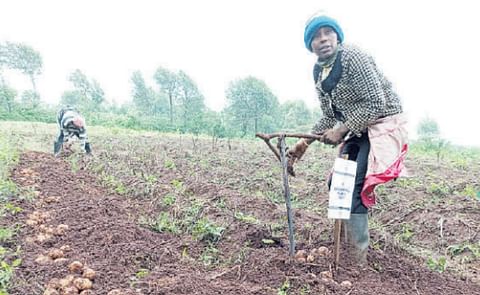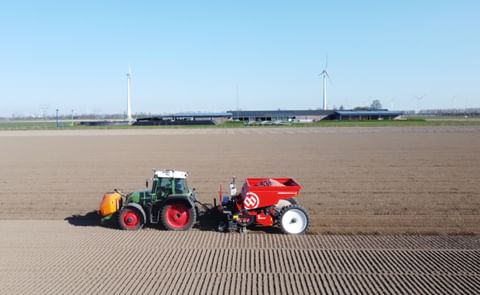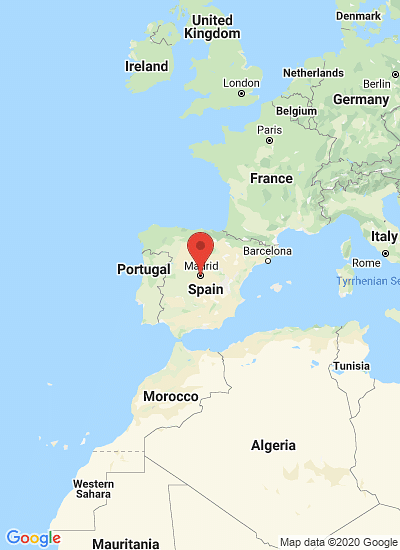Simplified life cycle of Phytophthora Infestans (Schumann et. al.)
Neiker-Tecnalia scientists warn of new resistant late blight variants

Scientists at the Basque Institute for Agricultural Research and Development, Neiker-Tecnalia, led by the Doctor in Biology José Ignacio Ruiz de Galarreta, have for the first time identified the existence in Álava-Araba of the two sexual types A1 and A2 of the fungus Phytophthora infestans, responsible for potato blight. The experts have been able to confirm that the crossing between the two types leads to variants that are more resistant to conventional fungicides and can survive in adverse conditions of temperature and humidity for months and even years on end.
The R&D centre’s experts warn of the possibility of crossing between types A1 and A2, which would lead to rapid, significant changes in the population of the Phytophtora infestans fungus with the appearance of new, more aggressive strains resistant to routine phytosanitary teatments. That is why Neiker-Tecnalia is carrying out surveying work in all the potato producing zones across Spain to study and characterise the blight populations in depth, and to monitor their evolution.
The blight cuts world potato production by approximately 15-20%, according to estimates by the International Potato Centre located in Lima (Peru) which reckons that the losses in Europe alone amount to over 1,000 million euros. Data like these have prompted Neiker-Tecnalia to explore the disease in depth in order to find out the types of races existing across Spain as a first step towards improving the effectiveness of the fight against this fungus.
Álava-Araba has been the place chosen to start the research. Over last summer Phytophthora infestans samples were collected in potato crops affected by the blight in five producing areas across Álava-Araba: Arkaute, Gauna, Heredia, Zuazo de San Millán and Iturrieta. Samples affected by the blight were taken from each area so that they could be identified. For this purpose, they were crossed with reference strains of the A1 and A2 type.
For there to be sexual reproduction between two strains, one has to belong to type A1 and the other to type A2. The type A1 reference strains were crossed in the laboratory with five isolates collected by the experts. Two of them produced oospores, so they belonged to type A2; specifically, they were the ones taken at Arkaute and Iturrieta. Then the five isolates were crossed with the A2 reference strain and the formation of oospores in three matings were obtained as the result. These were the strains gathered in Gauna, Heredia and Zuazo de San Millán, which were catalogued as type A1. These results were likewise confirmed by means of molecular techniques after the DNA had been extracted.
Sexual reproduction produces new races
The Phytophthora infestans fungus can also reproduce asexually, without being crossed. But the biggest problem for potato growers lies in sexual reproduction, since this produces new races of the fungus that attack the plants in a more virulent way and, at the same time, are more resistant to the treatments designed to eradicate them. Establishing that the A1 and A2 mating types exist in Álava-Araba leads to the possibility of sexual reproduction between different strains, even though they may be in very different zones, since the spores are able to move considerable distances thanks to the wind or irrigation water.
Neiker-Tecnalia has in recent years been detecting new races of the pathogen with a hitherto unseen aggressiveness and resistance to the main active ingredients of the fungicides currently existing on the market. The new races are, in turn, more resistant to climate conditions. As a general rule, Phytophthora infestans needs temperatures above 10º C and humidity above 90% in order to develop, while its development tends to be halted by temperatures over 27-30 ºC.
Control methods
Keeping an eye on the meteorological periods that encourage the development of the disease is helpful when it comes to picking the right moment for treatment. The current trend consists of comprehensively controlling the disease by combining the systems for predicting the periods during the year that are more advantageous as far as the disease and the application of fungicides are concerned. Neiker-Tecnalia experts recommend combining a range of fungicides with different active ingredients in order to prevent resistance appearing in the fungus caused by repeatedly using the same fungicide. Plant lesions become visible on day five following an attack by the fungus. The symptoms can be seen firstly on the lower leaves where a light-green or yellow spot can be seen on the tips and edges of the leaves. This spot separates healthy tissue from dead tissue. The lesions then spread across the remaining surface of the leaf and can be seen in the form of dark green, grey-brown or black patches.
The R&D centre’s experts warn of the possibility of crossing between types A1 and A2, which would lead to rapid, significant changes in the population of the Phytophtora infestans fungus with the appearance of new, more aggressive strains resistant to routine phytosanitary teatments. That is why Neiker-Tecnalia is carrying out surveying work in all the potato producing zones across Spain to study and characterise the blight populations in depth, and to monitor their evolution.
The blight cuts world potato production by approximately 15-20%, according to estimates by the International Potato Centre located in Lima (Peru) which reckons that the losses in Europe alone amount to over 1,000 million euros. Data like these have prompted Neiker-Tecnalia to explore the disease in depth in order to find out the types of races existing across Spain as a first step towards improving the effectiveness of the fight against this fungus.
Álava-Araba has been the place chosen to start the research. Over last summer Phytophthora infestans samples were collected in potato crops affected by the blight in five producing areas across Álava-Araba: Arkaute, Gauna, Heredia, Zuazo de San Millán and Iturrieta. Samples affected by the blight were taken from each area so that they could be identified. For this purpose, they were crossed with reference strains of the A1 and A2 type.
For there to be sexual reproduction between two strains, one has to belong to type A1 and the other to type A2. The type A1 reference strains were crossed in the laboratory with five isolates collected by the experts. Two of them produced oospores, so they belonged to type A2; specifically, they were the ones taken at Arkaute and Iturrieta. Then the five isolates were crossed with the A2 reference strain and the formation of oospores in three matings were obtained as the result. These were the strains gathered in Gauna, Heredia and Zuazo de San Millán, which were catalogued as type A1. These results were likewise confirmed by means of molecular techniques after the DNA had been extracted.
Sexual reproduction produces new races
The Phytophthora infestans fungus can also reproduce asexually, without being crossed. But the biggest problem for potato growers lies in sexual reproduction, since this produces new races of the fungus that attack the plants in a more virulent way and, at the same time, are more resistant to the treatments designed to eradicate them. Establishing that the A1 and A2 mating types exist in Álava-Araba leads to the possibility of sexual reproduction between different strains, even though they may be in very different zones, since the spores are able to move considerable distances thanks to the wind or irrigation water.
Neiker-Tecnalia has in recent years been detecting new races of the pathogen with a hitherto unseen aggressiveness and resistance to the main active ingredients of the fungicides currently existing on the market. The new races are, in turn, more resistant to climate conditions. As a general rule, Phytophthora infestans needs temperatures above 10º C and humidity above 90% in order to develop, while its development tends to be halted by temperatures over 27-30 ºC.
Control methods
Keeping an eye on the meteorological periods that encourage the development of the disease is helpful when it comes to picking the right moment for treatment. The current trend consists of comprehensively controlling the disease by combining the systems for predicting the periods during the year that are more advantageous as far as the disease and the application of fungicides are concerned. Neiker-Tecnalia experts recommend combining a range of fungicides with different active ingredients in order to prevent resistance appearing in the fungus caused by repeatedly using the same fungicide. Plant lesions become visible on day five following an attack by the fungus. The symptoms can be seen firstly on the lower leaves where a light-green or yellow spot can be seen on the tips and edges of the leaves. This spot separates healthy tissue from dead tissue. The lesions then spread across the remaining surface of the leaf and can be seen in the form of dark green, grey-brown or black patches.
Like to receive news like this by email? Join and Subscribe!
NEW! Join Our BlueSky Channel for regular updates!
Uitgelichte Bedrijven
Sponsored Content
Sponsored Content
Sponsored Content
Sponsored Content
Sponsored Content







